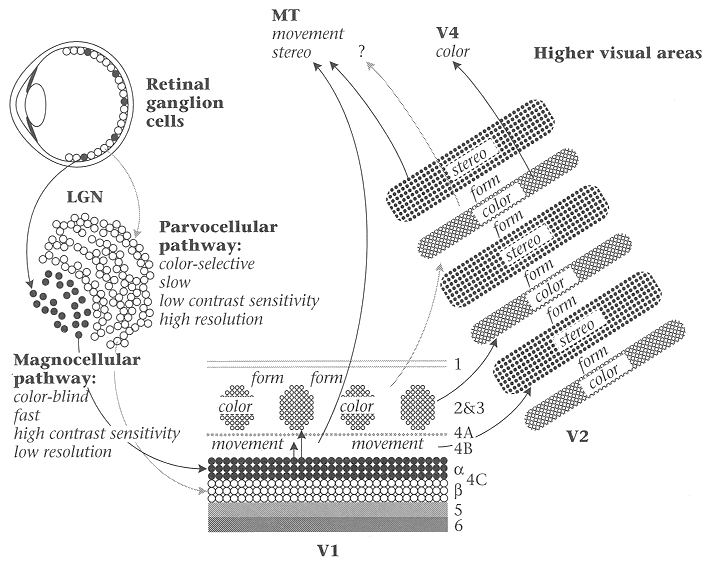
The primary visual cortex can be consider as the preprocessing stage of several parallel pathways that are specialized to process and analyze different aspects of the visual information, such as motion, form, and color.

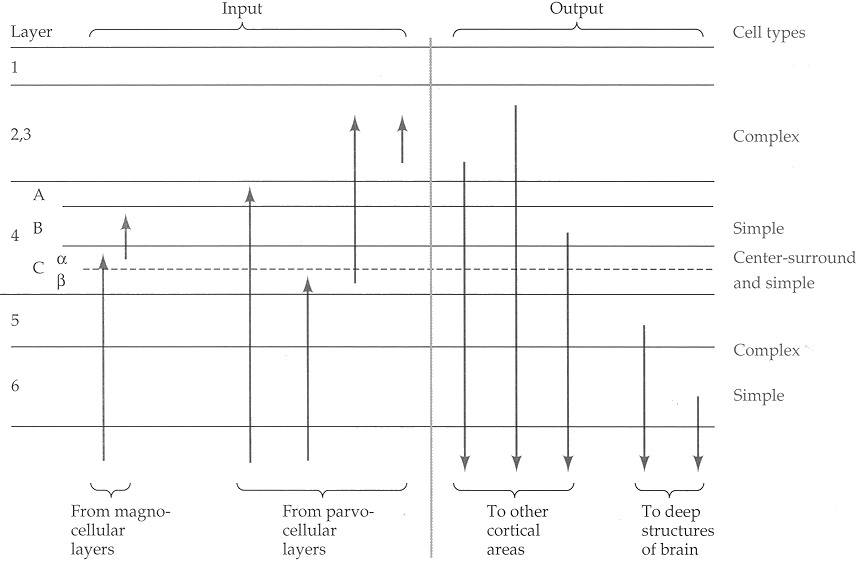
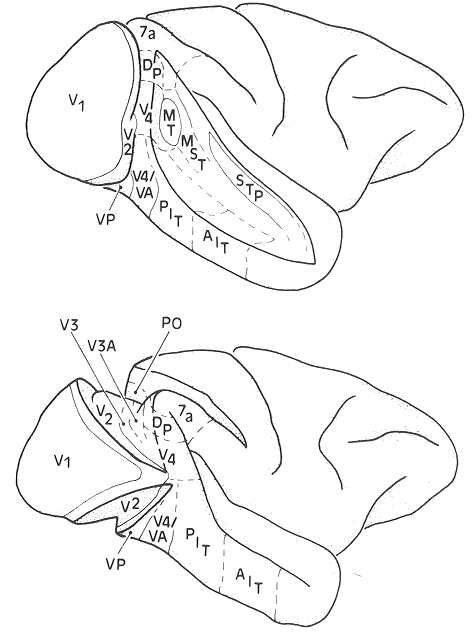
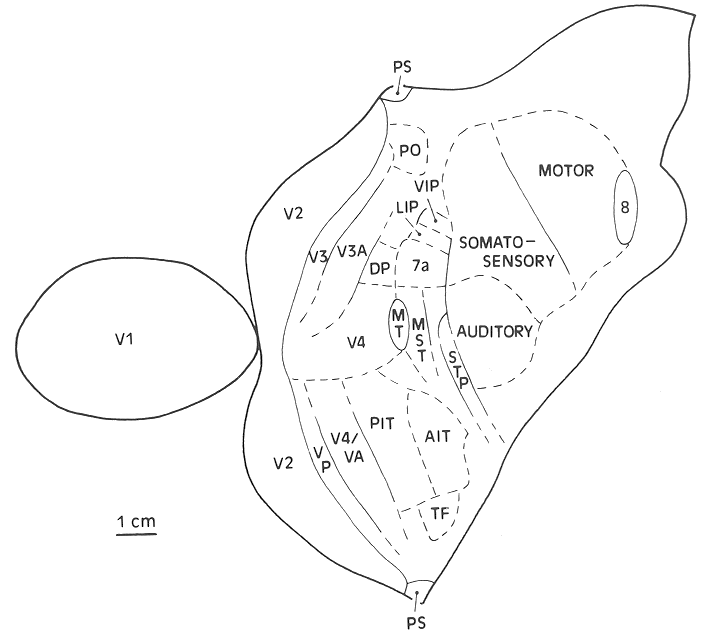
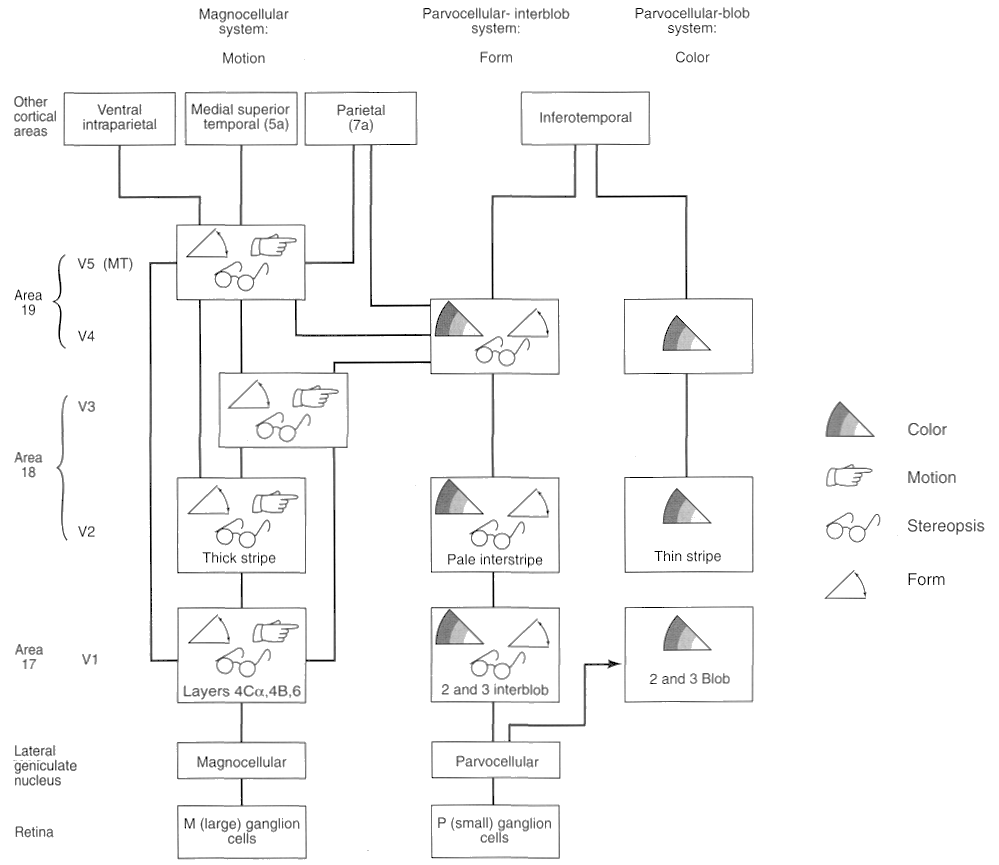
The four major visual processing pathways are listed here:
retinal P cells ![]() LGN-parvo
LGN-parvo ![]() V1-
V1-![]()
![]() V1-blobs
V1-blobs ![]() V2-thin stripes
V2-thin stripes
![]() V4
V4 ![]()
retinal P cells ![]() LGN-parvo
LGN-parvo ![]() V1-
V1-![]()
![]() V1-interblobs
V1-interblobs ![]() V2-pale stipes
V2-pale stipes ![]() V4
V4 ![]() IT
IT ![]()
retinal M cells ![]() LGN-magno
LGN-magno ![]() V1-
V1-![]()
![]() V1-4B
V1-4B ![]() V2-thick stipes
V2-thick stipes
![]() MT
MT ![]()
retinal M cells ![]() LGN-magno
LGN-magno ![]() V1-
V1-![]()
![]() V1-4B
V1-4B ![]() MT
MT ![]() MST
MST ![]()
Each specialized pathway can be considered as a hierarchical structure of multiple stages (levels, layers) componsed of cells of related but different selectivities.
First, the sizes of the receptive fields of the cells are progreesively larger from lower levels to higher levels of the hierarchy. This can be explained by the fact that a cell in a higher level usually receives multiple inputs from many cells in the lower level (just like a ganglion cell receives inputs from many receptors through the bipolar and horrizontal cells), and naturally its receptive field become larger as it receive information from all the receptive fields of the cells in the lower level that project to the higher level cell.
Secondly, as a result of this hierarchical structure, while cells in lower levels only respond to relatively local features in the visual field, cells in higher levels will respond to more global and therefore more abstract features of the visual signals. This is also the reason why the retinotopic organization observed in the lower cortical areas such as V1 and V2 become less and less obvious in progressively higher areas such as MT and IT.
In general, we see progressively more specialized signal processing functionality along the parallel pathways. However, we also need to realize that these specialized pathways are highly interactive. For example, while color processing is considered to take place in the pathway of V1 V2 and V4, colors do play a role in both form and motion analysis in the ``what'' and ``where'' pathways.
More generally, information from different pathways need to merge to form a unified percept of a certain object. For example, alghouth the multiple visual aspects of a falling apple (color, shape, motion, etc.) are processed in different visual areas in the brain, the percept combining all these aspects of such an apple still need to be formed somewhere. This so called ``binding problem'' still need to be addressed.